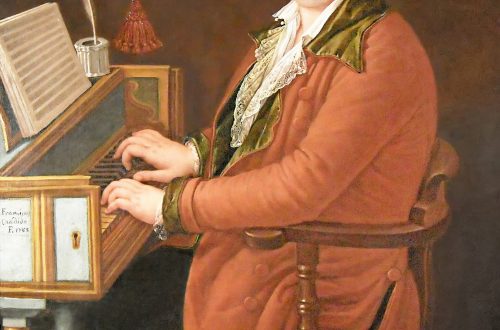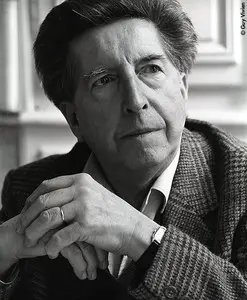
Darius Milhaud |
Darius Milhaud
Many awarded him the title of genius, and many considered him a charlatan whose main goal was to “shock the bourgeois.” M. Bauer
Creativity D. Milhaud wrote a bright, colorful page in the French music of the XX century. It vividly and clearly expressed the worldview of the post-war 20s, and the name of Milhaud was at the center of the musical-critical controversy of that time.
Milhaud was born in the south of France; Provencal folklore and the nature of his native land were forever imprinted in the soul of the composer and filled his art with the unique flavor of the Mediterranean. The first steps in music were associated with the violin, on which Milhaud studied first in Aix, and from 1909 at the Paris Conservatory with Bertelier. But soon the passion for writing took over. Among the teachers of Milhaud were P. Dukas, A. Gedalzh, C. Vidor, and also V. d’Andy (in the Schola cantorum).
In the first works (romances, chamber ensembles), the impressionism influence of C. Debussy is noticeable. Developing the French tradition (H. Berlioz, J. Bazet, Debussy), Milhaud turned out to be very receptive to Russian music – M. Mussorgsky, I. Stravinsky. Stravinsky’s ballets (especially The Rite of Spring, which shocked the entire musical world) helped the young composer see new horizons.
Even during the war years, the first 2 parts of the opera-oratorio trilogy “Oresteia: Agamemnon” (1914) and “Choephors” (1915) were created; Part 3 of the Eumenides was written later (1922). In the trilogy, the composer abandons impressionistic sophistication and finds a new, simpler language. Rhythm becomes the most effective means of expression (thus, the recitation of the choir is often accompanied only by percussion instruments). One of the first Milhaud used here a simultaneous combination of different keys (polytonality) to enhance the tension of the sound. The text of the tragedy of Aeschylus was translated and processed by the prominent French playwright P. Claudel, a friend and like-minded Milhaud for many years. “I found myself on the threshold of a vital and healthy art… in which one feels power, energy, spirituality and tenderness released from the fetters. This is the art of Paul Claudel!” the composer later recalled.
In 1916, Claudel was appointed ambassador to Brazil, and Milhaud, as his personal secretary, went with him. Milhaud embodied his admiration for the brightness of the colors of tropical nature, the exoticism and richness of Latin American folklore in Brazilian Dances, where polytonal combinations of melody and accompaniment give the sound a special sharpness and spice. The ballet Man and His Desire (1918, script by Claudel) was inspired by the dance of V. Nijinsky, who toured Rio de Janeiro with S. Diaghilev’s Russian ballet troupe.
Returning to Paris (1919), Milhaud joins the group “Six”, the ideological inspirers of which were the composer E. Satie and the poet J. Cocteau. Members of this group opposed the exaggerated expression of romanticism and impressionistic fluctuations, for “earthly” art, the art of “everyday”. The sounds of the XNUMXth century penetrate into the music of young composers: the rhythms of technology and the music hall.
A number of ballets created by Milhaud in the 20s unite the spirit of eccentricity, a clown performance. In the ballet Bull on the Roof (1920, script by Cocteau), which shows an American bar during the years of prohibition, the melodies of modern dances, such as tango, are heard. In The Creation of the World (1923), Milhaud turns to the jazz style, taking as a model the orchestra of Harlem (the Negro quarter of New York), the composer met with orchestras of this kind during his tour of the United States. In the ballet “Salad” (1924), reviving the tradition of the comedy of masks, old Italian music sounds.
Milhaud’s searches are also varied in the operatic genre. Against the backdrop of chamber operas (The Sufferings of Orpheus, The Poor Sailor, etc.) rises the monumental drama Christopher Columbus (after Claudel), the pinnacle of the composer’s work. Most of the work for musical theater was written in the 20s. At this time, 6 chamber symphonies, sonatas, quartets, etc. were also created.
The composer has toured extensively. In 1926 he visited the USSR. His performances in Moscow and Leningrad did not leave anyone indifferent. According to eyewitnesses, “some were indignant, others were perplexed, others were positive, and young people were even enthusiastic.”
In the 30s, Milhaud’s art approaches the burning problems of the modern world. Together with R. Rolland. L. Aragon and his friends, members of the Six group, Milhaud has been participating in the work of the People’s Musical Federation (since 1936), writing songs, choirs, and cantatas for amateur groups and the broad masses of the people. In cantatas, he turns to humanistic themes (“Death of a Tyrant”, “Peace Cantata”, “War Cantata”, etc.). The composer also composes exciting play-plays for children, music for films.
The invasion of Nazi troops in France forced Milhaud to emigrate to the United States (1940), where he turned to teaching at Mills College (near Los Angeles). Having become a professor at the Paris Conservatory (1947) upon his return to his homeland, Milhaud did not leave his work in America and traveled there regularly.
More and more he is attracted to instrumental music. After six symphonies for chamber compositions (created in 1917-23), he wrote 12 more symphonies. Milhaud is the author of 18 quartets, orchestral suites, overtures and numerous concertos: for piano (5), viola (2), cello (2), violin, oboe, harp, harpsichord, percussion, marimba and vibraphone with orchestra. Milhaud’s interest in the theme of the struggle for freedom does not weaken (the opera Bolivar – 1943; the Fourth Symphony, written for the centenary of the revolution of 1848; the cantata Castle of Fire – 1954, dedicated to the memory of the victims of fascism, burned in concentration camps).
Among the works of the last thirty years are compositions in a variety of genres: the monumental epic opera David (1952), written for the 3000th anniversary of Jerusalem, the opera-oratorio St. mother ”(1970, after P. Beaumarchais), a number of ballets (including“ The Bells ”by E. Poe), many instrumental works.
Milhaud spent the last few years in Geneva, continuing to compose and work on the completion of his autobiographical book, My Happy Life.
K. Zenkin
- List of Milhaud major works →





